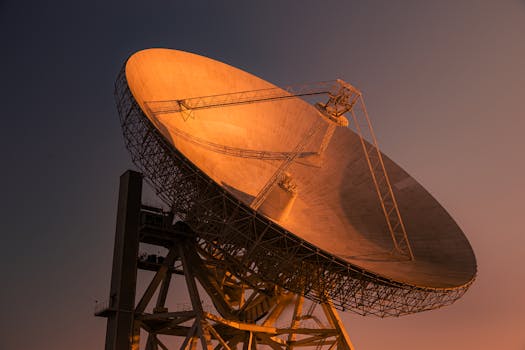From Ground to Sky: The Evolution of Satellite Telecommunications Technology

From Ground to Sky: The Evolution of Satellite Telecommunications Technology
Satellite telecommunications technology has come a long way since its inception in the 1960s. From the first commercial satellite, Intelsat 1, to the current state-of-the-art satellites, the technology has evolved significantly, transforming the way we communicate. Satellite telecommunications technology has played a crucial role in connecting the world, providing global coverage, and enabling rapid communication.
History of Satellite Telecommunications
The concept of satellite telecommunications dates back to the 1940s, when science fiction writer Arthur C. Clarke proposed the idea of using satellites for communication. However, it wasn’t until the 1960s that the first commercial satellite, Intelsat 1, was launched. Intelsat 1 was a geostationary satellite that provided transatlantic communication services. The success of Intelsat 1 paved the way for the development of more advanced satellites, including the Intelsat 2 series, which provided higher capacity and better connectivity.
The 1970s and 1980s saw the introduction of new satellite systems, including the Comsat and RCA Satcom series. These satellites provided improved performance, increased capacity, and expanded coverage. The 1990s witnessed the launch of the first digital satellite systems, including the Intelsat 700 series and the Inmarsat-3 series. These satellites enabled the transmission of digital signals, providing higher quality and more reliable communication services.
Development of Modern Satellite Telecommunications
The modern satellite telecommunications industry has witnessed significant advancements in recent years. The development of new technologies, such as telecommunications technology, has enabled the creation of more efficient and powerful satellites. The introduction of high-throughput satellites (HTS) has revolutionized the industry, providing faster data rates and greater connectivity. HTS satellites use advanced technologies, such as spot beams and frequency reuse, to increase capacity and reduce costs.
Another significant development in the satellite telecommunications industry is the emergence of low-Earth orbit (LEO) satellites. LEO satellites operate at an altitude of around 1,000 km, which is much lower than traditional geostationary satellites. LEO satellites provide lower latency and higher throughput, making them ideal for real-time applications, such as video streaming and online gaming. Companies like SpaceX and OneWeb are launching constellations of LEO satellites to provide global coverage and high-speed connectivity.
Future of Satellite Telecommunications
The future of satellite telecommunications looks promising, with several new technologies and innovations on the horizon. The development of 5G satellite networks is expected to provide even faster data rates and lower latency. 5G satellite networks will enable the use of satellite communications for mission-critical applications, such as public safety and emergency response.
Another area of research and development is the use of satellite-based Internet of Things (IoT) services. Satellite-based IoT services will enable the connection of devices and sensors in remote and underserved areas, providing new opportunities for industries such as agriculture, transportation, and energy. The use of artificial intelligence (AI) and machine learning (ML) in satellite telecommunications is also expected to increase, enabling the optimization of satellite operations and the provision of more efficient services.
Conclusion
In conclusion, the evolution of satellite telecommunications technology has transformed the way we communicate, from ground to sky. From the first commercial satellite to the current state-of-the-art satellites, the technology has evolved significantly, providing global coverage, rapid communication, and new opportunities for industries and individuals. As the industry continues to innovate and develop new technologies, we can expect even more exciting advancements in the future of satellite telecommunications.


